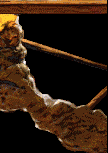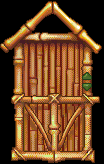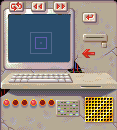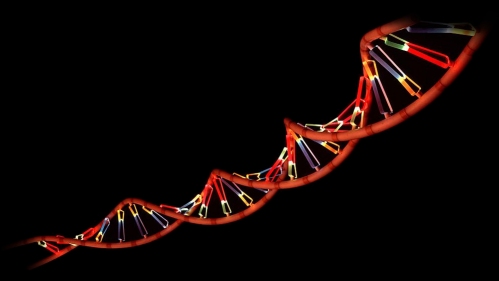
All commands used to create new objects begin with "new:"
NOTE: all new: commands change the target object to the one which has just been created, so that any further commands in the script will affect the new object and can thus be used to alter other variables as required.
Scenery Objects

new: scen imagefile #images
image# plane
Creates a scenery object.
Imagefile is a 4-byte token representing the filename of the image file in the /images directory.
#images is the total number of images in that file.
Image# is the image associated with this object.
Plane is the depth position of the object, 0 = background, 9000 = foreground.
Simple Objects




new: simp imagefile #images
image# plane clone
Create a Simple Object.
Most of objects you will ever create using cobs will be
simple ones, food, toys, herbs, animals are all simple objects.
Note that the
default family will be set to 2.
clone is 0 normally, or 1 to create a cloned image gallery. (Sorry I'm not sure exactly what that means, so I always set it to 0)
See above for the other values.
Call Button Objects

new:
cbtn imagefile #images image# plane
Create a lift Call Button object.
See above for the other values.
Compound Objects
new: comp
imagefile #images image# clone
Create a Compound Object. Note that the default family will be set to 3,
compound objects.
You must use "new: part" to add one or more parts to object as
it initially has none.
Compound objects are objects with more than one part, this makes it easier to change parts of the object easily and save space in the image files used.
See above for the other values.
Compound Object Parts
new: part part# relx rely imageoffset plane
Used to add a part to the current target Compound Object.
This is best done
immediately after creating the parent compound object.
After this command, the
"part" value is left pointing to this part number, for subsequent part-relative
commands.
part# is the part number, from 0 to 9. Zero is the default main part, and
is probably essential.
relx and rely are the position of the part relative to part 0. It keeps things simple to use the coordinates 0 and 0 for part 0.
imageoffset is the base sprite for this part relative to first
sprite for the object, so 1 for the next image, 2 for the one after
than etc.
Plane is the Z position of the object, 0 = background, 9000 = foreground.
Vehicle Objects

new: vhcl imagefile #images image#
Create a Vehicle, a specific type of compound object.
These are usually horizontally moving objects such as the rafts for moving other objects and creatures.
Lift Objects

new: lift imagefile #images image#
Create a Lift, another specific type of compound object.
These are usually vertically moving objects such as the wooden lifts for moving other objects and creatures.
Blackboard Objects

new: bkbd imagefile
#images image# bkgndcolour chalkcolour aliascolour textx texty
Create a Blackboard, a specific type of compound object used to teach the
meaning of words to creatures..
bkgndcolour chalkcolour aliascolour are the colour numbers to use for plotting text.
textx and texty are the co-ordinates of the place to plot text, relative to part 0.
Other blackboard commands can be found here.
Creature Objects

new: crea moniker sex
Create a new-born creature.
moniker is the filename of the new norn's genome file.
sex is set to 1 if the creature is to be male, 2 if it's to be female.
More usually it is set to 0 if the sex is to be determined randomly.
Note: the moniker must be supplied as an integer, not a string. This is so that, for example,
egg objects can store the moniker in obv0 during incubation.
If you need to store a moniker in a macro as a token, then
you must use the tokn command to convert it to integer.
Examples:
NEW: CREA OBV0 0 — create creature bred from moniker stored in the variable "obv0".
NEW: CREA TOKN EVE1 0 — create from explicitly named genome file "eve1".
Genome Files

new: gene mum dad child
Create a new genome file from mum's and dad's (or just mum's if dad = 0) genomes, and store the new genome's moniker in the
value child.
Again, the token command "tokn " must be used to create an integer from the genome file name.
Example:
new: gene tokn eve_ tokn adam obv0
This will create a child of Adam and Eve and store the child's genome moniker in
target object's obv0 variable.
This child genome can later be used to make a new creature (after a pregnancy and an egg)